The traditional or the most popular rib cuts are the beef back ribs, baby back ribs, and the St. Louis style cuts. Now we have things like brontosaurus ribs, dino ribs, flanking ribs, short ribs, and back ribs in the cow. Then, on pork, you also have the spare rib and country-style ribs. Fans of lamb meats are also not left out, as they have lamb chops and spare ribs.
If you’re in love with fall-off-the-bone ribs meat like myself, the good news is that you have plenty to choose from. In today’s article, I’m talking about the various types of ribs just as I’ve seen them at the butcher’s sheds, in grocery stores, and while preparing them over the years since cooking school.
I may be unable to subdivide the main ribs into smaller versions like the brontosaurus. However, I’ll show you the most basic and common types of ribs in the culinary world. I’m not stopping at ribs from the pig or steer. We will also see some of the most common ones from the domestic sheep.
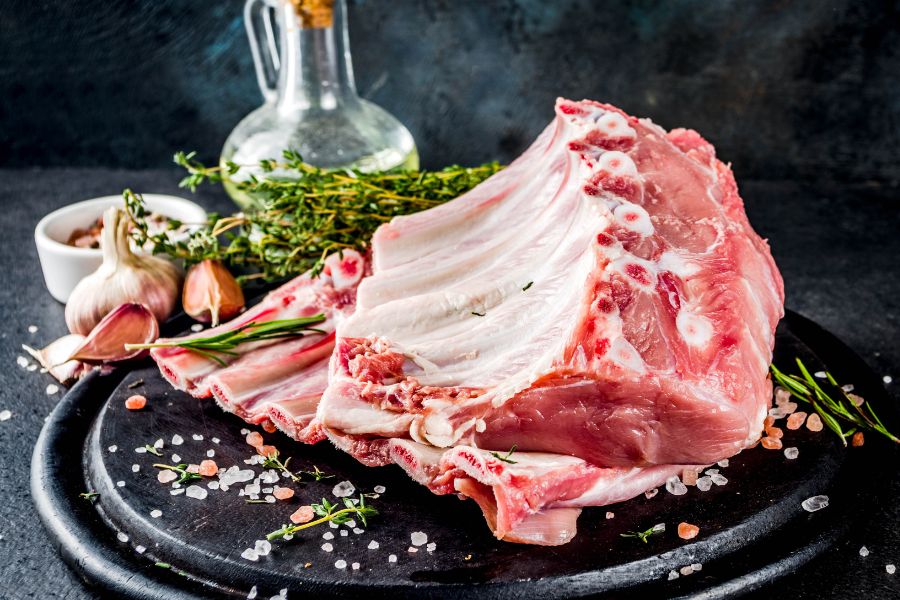
Here’s a quick list of the most common ribs, including the animal and parts they’re taken from:
Type | Animal | Where It's Taken From |
Baby Back Ribs | Pig | Below the Loin Muscle |
Pork Spare Ribs | Pig | Belly Side; Above the Sternum |
St. Louis Style Ribs | Pig | Belly; Under the Breastbone |
Country Style Pork Ribs | Pig | Shoulder Area |
Beef Back Ribs | Cow | Rib Primal; Above the Ribcage |
Beef Short Ribs | Cow | Under the Ribcage |
Flanken Cut Beef Ribs | Cow | Chuck End; Across the Rib Bones |
Lamb Chops | Domestic Sheep | Rib Rack Between the Shoulder and Loin |
Lamb Spare Ribs | Domestic Sheep | Under the Rib Cage |
Pork is the king of ribs. Flavorful, meaty, and available in various cuts, pork fans are spoiled for choice. Here’s what you’ve got:
Baby back ribs from the pig are often called loin ribs or chop ribs. Anatomically, the baby back ribs start at the top of the animal’s spine. They enclose the ribs from the spine to the middle of the stomach.
They are given the name Baby Back because they are significantly shorter than the classic spareribs. Baby back ribs are meat from the upper back of the pig.
These pork ribs have lean meat and are quite tender. They are less fleshy, smaller, more tender, and more expensive than spare ribs. The meat content of the baby back ribs is about 50 percent. Also, the bones in the spine are a bit closer together. So there’s generally less meat within the ribs.
Be careful when buying baby back ribs as they are often referred to as spare rib cuts, even though they are not. Instead, baby back ribs are the rib bones from the chops cut (chops ribs) between the back and belly.
Regarding preparation, I usually like to free my baby back ribs from the silver skin and rub it with a dry spice mixture (rub).
Immediately afterward or after a particular marinating time, they are slowly cooked at a low temperature (around 225 degrees Fahrenheit) for 4 to 6 hours. You can cook it in the barbecue smoker, on the grill with indirect heat, or in the oven.
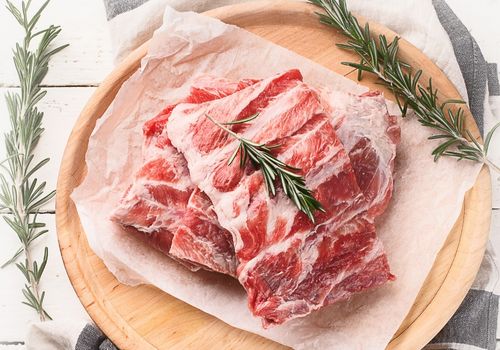
You’re probably familiar with pork spare ribs. The delicious grilled rib meat almost melts in your mouth and has a unique taste. Where exactly does the BBQ classic come from?
Strictly speaking, spare ribs only mean the ribs from the pork belly side above the sternum.
In the barbecue world, the term has established itself for ribs in combination with meat.
The spare ribs, in turn, can be separated into the famous St. Louis cut and rib tips. More on that soon.
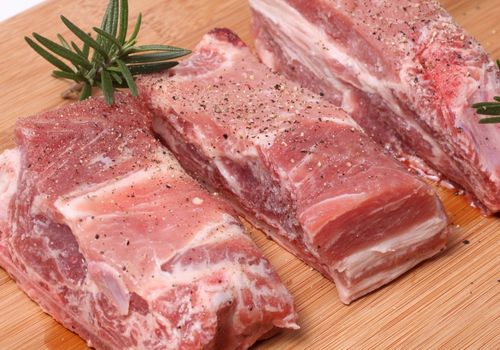
St. Louis-style ribs are among the most commonly eaten meats on the menu — particularly within the South. They are almost as popular as pork cuts like the baby back and spare ribs.
St. Louis cut ribs come from the belly just under the breastbone. They come from the same section of the rib cage that makes up spare ribs.
The only difference is in the technique involved in the butchering and preparation processes. Also, you can get both bone-in and boneless country-style ribs in the meat market.
These ribs got their name in the 1930s to 1960s when the meatpacking companies of St. Louis in Missouri began producing new rectangular-style cuts of pork spare ribs that had more meat.
To get the St. Louis-style ribs cut, you need to remove the rib tips and the cartilage. This gives us a rib section that is cleanly separated with exceptional meat content.
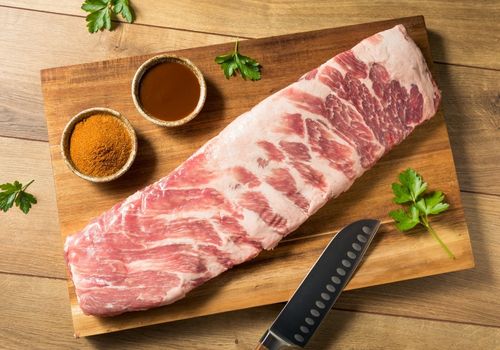
Country-style ribs or Western-style ribs are pork rib chops from the front of the pork loin near the shoulder.
They are typically cut from the pork butt or shoulder that has a large amount of fat and a lot of connective tissues. This means they need to be cooked well above the safe temperature of 145 degrees Fahrenheit to be tender.
And since they have enough flavorful fat to melt, they won’t go dry or tough.
I’ve also seen some country-style pork ribs taken from lean pork loin. However, when cooked above temperatures of 145 degrees, country-style ribs taken from pork loin will dry out and be un-chewable because of the absence of fat or connective tissue.
The problem is country-style ribs are not always labeled correctly. So I advise that you look at different country-style ribs made from pork butt and pork loin. This is the only way you can see the differences in the texture, fat content, and appearance of the meat.
You can also ask the butcher or salesperson behind the counter. Hopefully, they will know how the country-style ribs were cut.
If you aren’t so sure, buy a whole pork butt. Then have the butcher debone and cut the meat into strips about 1-1.5 inches thick and 2-3 inches wide. Worst case scenario, get a sharp knife and debone/cut a pork butt yourself into country-style ribs.
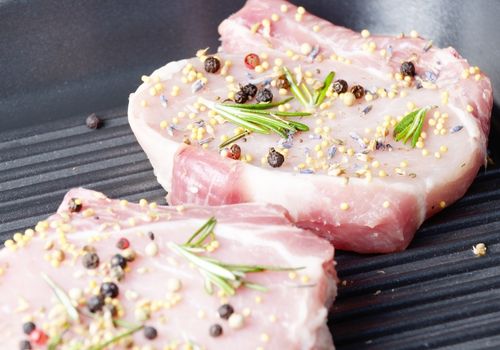
Beef ribs used to be a cheap cut of meat. I still remember when some butchers would give their customers rib bones for their dogs.
Nowadays, beef ribs can be expensive. More people have discovered that these ribs can be a delicious alternative to pork ribs.
Beef rib meat is full of tough connective tissue and nerves, making it challenging to chew unless adequately prepared. Beef ribs come in two different forms. There are beef back ribs and short ribs. There’s also another new type which is called the flanken cut. Here is more info about them:
Beef back ribs are cut from the top of the rib and are directly above the flavorful and plump short rib. There are usually 7 to 12 ribs on each rack. They can also be cut from the roast or the loin meat portion of the steer.
Rib cuts near the roast are often cut very close to the rib bone, with little meat except between the bones.
Beef back ribs can be cut to any length, from dinosaur ribs that are 18 inches (46 cm) to a more manageable 6 to 8 inches (15 to 20 cm). They can be packed in groups of 13 bones up to a single one.
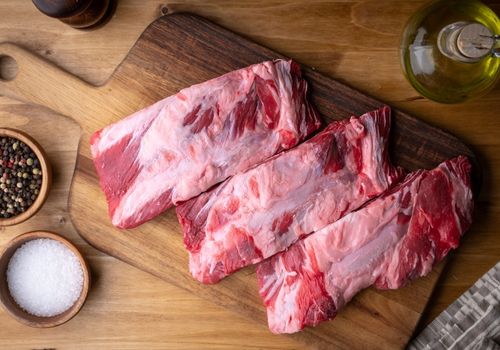
The beef short ribs are cut from the front of the steer. This area is located at the lower portion of the animal’s rib cage.
Short ribs are shorter; usually, 2 to 4 inches (5 to 10 cm) long, and have more meat than the longer back ribs. However, low and slow cooking is the best method to prepare beef short ribs. Unless you slow-cook short ribs, they are almost impossible to chew.
Not all short ribs are the same. While most short ribs have a good layer of meat, those near the end of the steer’s flank have less meat. Butchers tend to pack 1-2 of these thin bones in each package.
Check the package carefully to ensure each rib bone has a good serving of meat. Boneless rib packages should not have excessive layers of fat on the meat.
In addition, short ribs are more commonly available as bone-in. Boneless short ribs have the benefit of less connective tissue and ribs. However, they lack the flavor that comes from being attached to the bone. The boneless beef short ribs can also be pricey, but you get more meat for what you pay for.
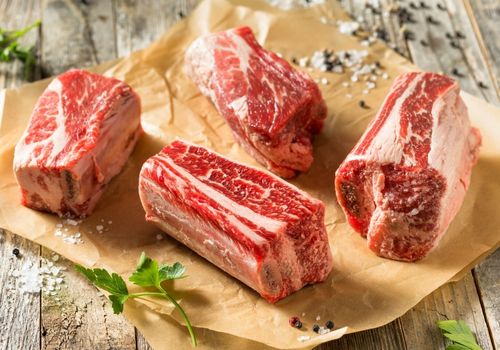
Flanked-style ribs originate in the same area of the cow as short ribs. It’s cut differently.
Instead of a traditional rib cut, flanken-style ribs are thinner cuts that are a quarter inch thick. They are high in calories, with up to 63 calories in an ounce serving. They are very beefy and are a staple in Asian and Mexican cuisine.
Flanked ribs are widely used in Korean barbecues. They are called beef galbi or “kalbi,” which means “ribs” in Korean. If you have ever eaten kalbi-style beef in Korean restaurants, chances are they’re flanker’s ribs. These types of ribs can be cooked on the grill at high temperatures or braised.
Related Reading
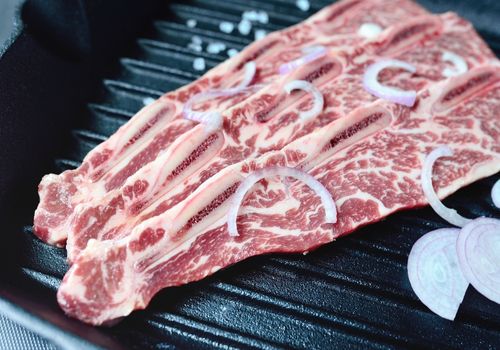
Lamb ribs are not as common. They are tasty and tender cuts of meat. You can prepare it in the oven, on the grill, or in the slow cooker. Here are the most common types of lamb ribs:
Lamb spare ribs are a delicious substitute for classic pork spare ribs. These ribs are cut from the front belly area and the sheep’s rib. The spare lamb ribs are the same as the Denver ribs and are wonderfully meaty.
Lamb spare ribs are not only suitable for the grill and the smoker. You can also stew hearty lamb ribs.
They are delicious when roasted with their bones. But ensure up to 12 minutes of cooking time per pound for rare, medium doneness.
The ribs, when they are not grilled, braised, or sautéed, are also used in the preparation of delicious stews.
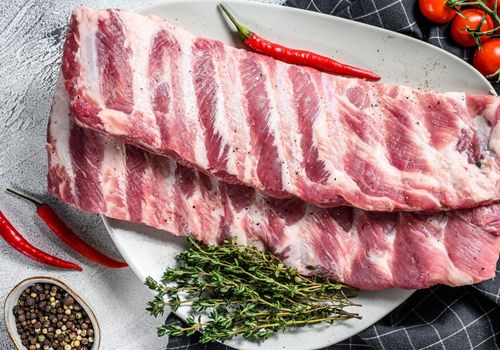
Lamb chops are bone-in rib cuts taken from an angle perpendicular to the animal’s spine. Lamb chops have thin coatings of fat that flavor and nourish the flesh during cooking. This makes them a delicacy most appreciated by connoisseurs.
Grilling is the cooking par excellence for lamb ribs like chops. You just need to sear them at high temperatures so that they retain all their juices. However, ensure that you don’t prick them with a fork. This is so that they maintain their juice and don’t dry out.
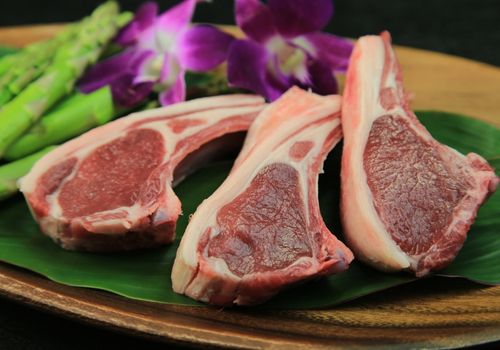
Pork ribs seem to be the most common type of ribs across animals taken as food. The Louis-style ribs from the pig are the most flavorful and meatiest cut of ribs. Beef ribs attract many fans too. I like beef ribs better because it has a better balance of flesh, fat, and connective tissue, even though it requires prolonged cooking.
Beef ribs are usually available in 3 basic cuts – short ribs, baby back beef ribs, and flanken-style ribs – depending on the area they are taken.
The four main varieties of pork ribs are spare ribs, St. Louis-styled ribs, Country style ribs, and baby back ribs.
When I think of ribs, the number one thing I think of is flavor. You don’t get the full-bodied taste out of any other part of the beef or the pig than the rib.
If you’re a BBQ fan fond of ribs, I’ve shown you the common options you have across the most popular animals eaten as food.
Pork ribs are pretty flavorful, thanks to their fat content. Beef ribs are meaty, well-marbled, and suitable for smoking, braising, grilling, or baking. Finally, lamb ribs are for fans of ribs with tender meat between the bones.